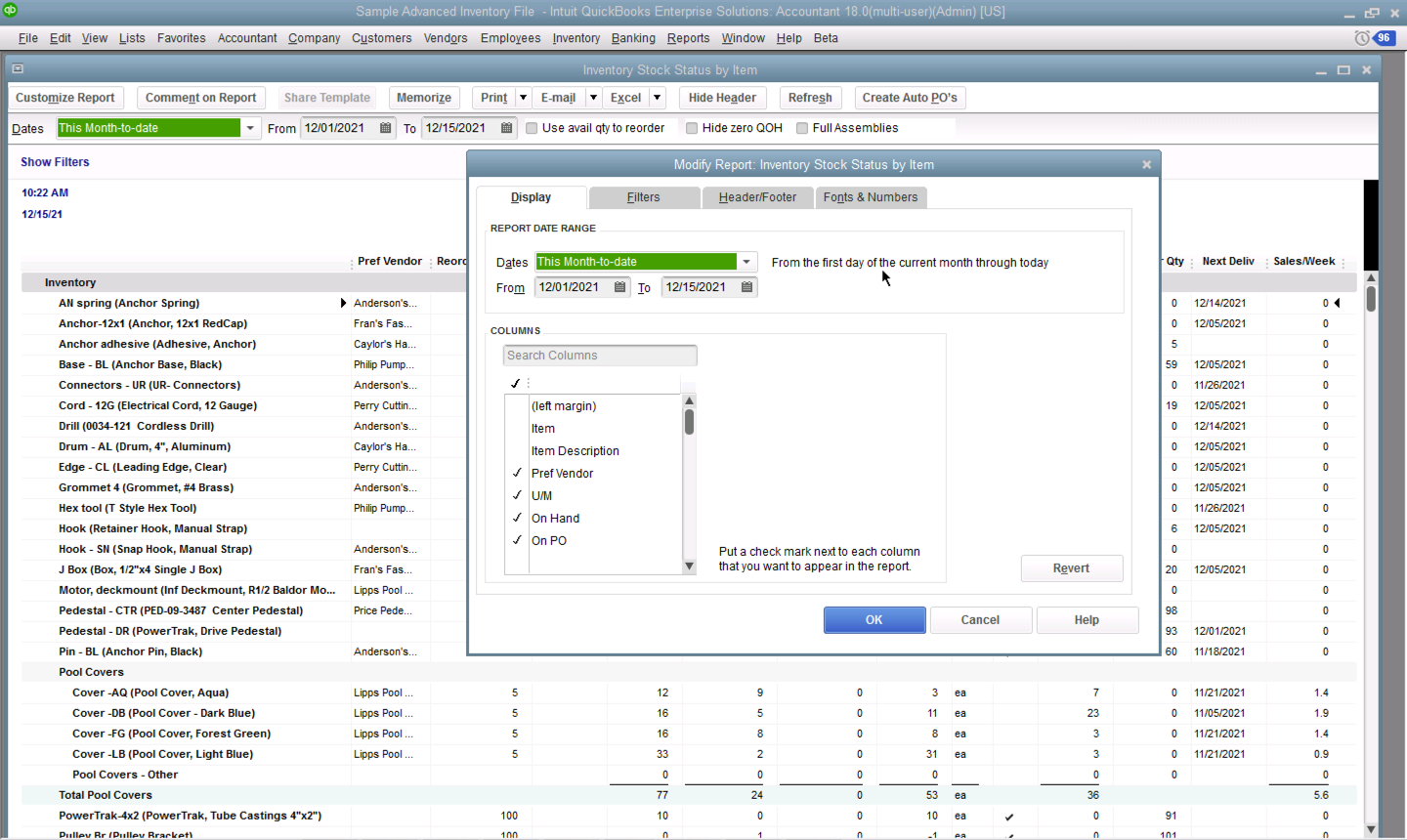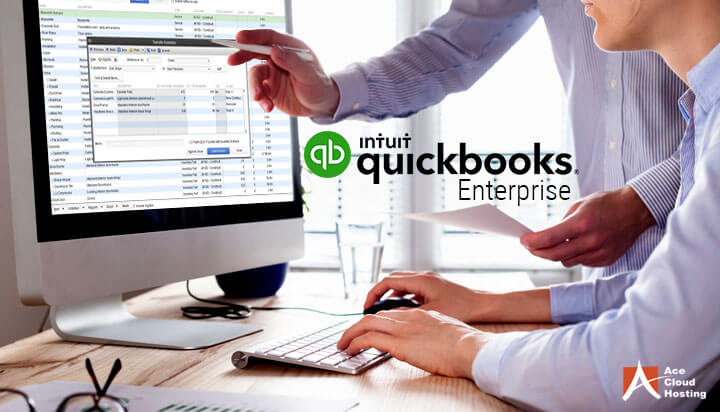Business inventory management quickbooks enterprise how – Welcome to the definitive guide on business inventory management with QuickBooks Enterprise. This comprehensive resource will equip you with the knowledge and strategies to optimize your inventory, streamline operations, and maximize profitability. Join us as we delve into the capabilities, implementation, optimization, and best practices of QuickBooks Enterprise for inventory management.
QuickBooks Enterprise is a robust accounting software solution designed specifically for businesses with complex inventory needs. Its advanced inventory management features enable you to track stock levels, manage multiple locations, and analyze inventory performance in real-time.
Inventory Management with QuickBooks Enterprise

QuickBooks Enterprise is a robust accounting software solution designed for mid-sized to large businesses. It offers comprehensive inventory management capabilities that enable businesses to effectively track, manage, and optimize their inventory levels.
Capabilities of QuickBooks Enterprise for Inventory Management
- Multi-location Inventory Tracking:Manage inventory levels across multiple warehouses, stores, or locations.
- Item Management:Create and maintain detailed item records, including product descriptions, pricing, and inventory quantities.
- Bin Tracking:Assign specific bins or locations to inventory items for efficient warehouse management.
- Lot and Serial Number Tracking:Track inventory items by lot or serial number for improved traceability and quality control.
- Barcode Scanning:Utilize barcode scanners to streamline inventory receiving, shipping, and tracking processes.
- Inventory Valuation Methods:Choose from various inventory valuation methods, such as FIFO, LIFO, and Average Cost, to determine the cost of goods sold.
- Inventory Replenishment:Set up automated inventory replenishment rules to ensure optimal stock levels.
Comparison of QuickBooks Enterprise with Other Inventory Management Software
QuickBooks Enterprise offers several advantages over other inventory management software:
- Integrated Accounting:Seamlessly integrates with QuickBooks Enterprise’s accounting features, providing a comprehensive financial management solution.
- Scalability:Designed to handle the needs of growing businesses with complex inventory requirements.
- Customization:Allows businesses to customize inventory reports, workflows, and user permissions to meet their specific needs.
- Support:Backed by QuickBooks’ renowned customer support team, ensuring timely assistance and troubleshooting.
Benefits of Using QuickBooks Enterprise for Inventory Management
- Improved Inventory Accuracy:Real-time inventory tracking and management reduce errors and ensure accurate inventory levels.
- Optimized Stock Levels:Automated replenishment and forecasting tools help businesses maintain optimal stock levels, minimizing overstocking and stockouts.
- Enhanced Warehouse Efficiency:Bin tracking and barcode scanning streamline warehouse operations, saving time and reducing labor costs.
- Improved Customer Service:Accurate inventory information enables businesses to fulfill customer orders efficiently and respond to inquiries promptly.
- Reduced Inventory Costs:Optimized inventory levels and improved accuracy can lead to significant cost savings in storage, handling, and obsolescence.
Implementing QuickBooks Enterprise for Inventory Management

Implementing QuickBooks Enterprise for inventory management involves a series of steps to ensure efficient and accurate inventory tracking. These steps include setting up inventory items, locations, units of measure, and managing inventory levels and stock movements.
Setting Up Inventory Items
To set up inventory items in QuickBooks Enterprise, follow these steps:
- Go to the “Lists” menu and select “Item List”.
- Click on the “Item” tab and select “New”.
- Enter the item’s name, description, and other relevant details.
- Select the appropriate income and expense accounts for the item.
- Click on the “Save” button to create the inventory item.
Setting Up Inventory Locations
To set up inventory locations in QuickBooks Enterprise, follow these steps:
- Go to the “Lists” menu and select “Locations”.
- Click on the “New” button and enter the location’s name and address.
- Select the appropriate default income and expense accounts for the location.
- Click on the “Save” button to create the inventory location.
Setting Up Units of Measure
To set up units of measure in QuickBooks Enterprise, follow these steps:
- Go to the “Lists” menu and select “Units of Measure”.
- Click on the “New” button and enter the unit of measure’s name and abbreviation.
- Select the appropriate base unit of measure and conversion factor.
- Click on the “Save” button to create the unit of measure.
Managing Inventory Levels
To manage inventory levels in QuickBooks Enterprise, follow these steps:
- Go to the “Inventory” menu and select “Inventory Center”.
- Select the “Adjust Quantity on Hand” tab.
- Enter the item’s name or SKU and adjust the quantity on hand accordingly.
- Click on the “Save” button to update the inventory level.
Tracking Stock Movements, Business inventory management quickbooks enterprise how
To track stock movements in QuickBooks Enterprise, follow these steps:
- Go to the “Inventory” menu and select “Inventory Transactions”.
- Select the appropriate transaction type (e.g., purchase order, sales order, etc.).
- Enter the item’s name or SKU and view the transaction details.
- Click on the “Save” button to update the inventory transaction.
Inventory Optimization with QuickBooks Enterprise: Business Inventory Management Quickbooks Enterprise How
Inventory optimization is a critical aspect of inventory management. By optimizing inventory levels, businesses can reduce costs, improve customer service, and increase profitability. QuickBooks Enterprise provides a number of tools and features to help businesses optimize their inventory.
Inventory Reports
Inventory reports are a valuable tool for analyzing inventory performance. These reports can help businesses identify trends, spot problems, and make informed decisions about inventory management. QuickBooks Enterprise offers a variety of inventory reports, including:
- Inventory Summary Report
- Inventory Valuation Report
- Inventory Turnover Report
- Inventory Age Report
These reports can be used to track inventory levels, identify slow-moving items, and analyze inventory turnover. By understanding how inventory is performing, businesses can make better decisions about inventory management.
Inventory Optimization Techniques
There are a number of techniques that businesses can use to optimize inventory levels. These techniques include:
- Just-in-time (JIT) inventory: JIT inventory is a method of inventory management that seeks to minimize inventory levels by ordering only the inventory that is needed, when it is needed. This can help businesses reduce inventory costs and improve inventory turnover.
- Safety stock: Safety stock is a buffer of inventory that is kept on hand to protect against unexpected demand or supply disruptions. Safety stock can help businesses avoid stockouts and maintain customer satisfaction.
- Inventory forecasting: Inventory forecasting is the process of predicting future demand for inventory. This information can be used to optimize inventory levels and avoid stockouts or overstocking.
By using these techniques, businesses can optimize inventory levels, reduce costs, and improve customer service.
Advanced Inventory Management Features
QuickBooks Enterprise offers advanced inventory management features to help businesses with complex inventory needs streamline their processes and improve accuracy. These features include:
- Multi-location inventory tracking:Allows businesses to track inventory across multiple locations, ensuring accurate stock levels and efficient fulfillment.
- Serial number and lot tracking:Enables businesses to track individual items or groups of items by their unique identifiers, providing detailed visibility into inventory movements.
- FIFO (First-In, First-Out) and LIFO (Last-In, First-Out) costing methods:Helps businesses manage inventory costs accurately based on the order in which items are purchased and sold.
- Landed cost tracking:Allows businesses to capture all costs associated with acquiring inventory, including shipping, handling, and customs duties, providing a more accurate view of inventory value.
- Demand forecasting:Helps businesses predict future demand based on historical sales data, enabling them to optimize inventory levels and avoid overstocking or stockouts.
These features provide several benefits for businesses, including:
- Improved inventory accuracy:By tracking inventory across multiple locations and using serial numbers or lot tracking, businesses can ensure accurate stock levels and reduce the risk of errors.
- Enhanced cost management:Using FIFO or LIFO costing methods and tracking landed costs, businesses can accurately calculate inventory costs and optimize pricing.
- Optimized inventory levels:Demand forecasting helps businesses determine optimal inventory levels, reducing the risk of overstocking or stockouts and improving cash flow.
- Increased efficiency:Automating inventory processes, such as reordering and stock adjustments, saves time and reduces the risk of manual errors.
Inventory Management Best Practices

Effective inventory management is crucial for optimizing operations and maximizing profitability. QuickBooks Enterprise offers robust inventory management capabilities that can help businesses streamline their processes and improve efficiency. By following best practices, businesses can leverage these features to enhance inventory accuracy, reduce costs, and drive growth.
Improving Inventory Accuracy
- Regularly conduct physical inventory counts:Reconcile physical inventory with QuickBooks Enterprise records to identify and correct discrepancies.
- Implement barcode scanning:Use barcode scanners to automate data entry, reduce errors, and speed up inventory tracking.
- Use inventory management software:QuickBooks Enterprise provides comprehensive inventory management tools that automate tasks, improve accuracy, and streamline processes.
Enhancing Inventory Efficiency
- Optimize inventory levels:Use inventory reports to identify slow-moving items and adjust stock levels accordingly, reducing carrying costs and preventing overstocking.
- Implement inventory forecasting:Forecast future demand based on historical data and market trends to ensure optimal inventory levels.
- Automate inventory replenishment:Set up automated purchase orders or reorder points to maintain inventory levels and avoid stockouts.
Maximizing Inventory Profitability
- Analyze inventory performance:Track inventory turnover, profitability, and other key metrics to identify areas for improvement.
- Negotiate with suppliers:Build strong relationships with suppliers to secure favorable pricing and payment terms.
- Offer discounts and promotions:Use inventory reports to identify slow-moving items and offer discounts or promotions to clear stock and generate revenue.
Integrating Inventory Management with Other Business Processes
- Link inventory to accounting:Integrate QuickBooks Enterprise inventory management with accounting to track inventory costs, manage accounts payable, and generate financial reports.
- Integrate with CRM:Connect inventory management with customer relationship management (CRM) to track customer orders, preferences, and inventory availability.
- Integrate with e-commerce:Sync inventory data with e-commerce platforms to update stock levels, process orders, and manage shipping.
Epilogue

In conclusion, QuickBooks Enterprise offers a comprehensive inventory management solution that empowers businesses to optimize their operations, reduce costs, and enhance profitability. By implementing the strategies Artikeld in this guide, you can gain complete control over your inventory, improve decision-making, and drive your business towards success.
FAQ Compilation
What are the benefits of using QuickBooks Enterprise for inventory management?
QuickBooks Enterprise provides numerous benefits, including real-time inventory tracking, multi-location management, advanced reporting capabilities, and seamless integration with other business processes.
How do I implement QuickBooks Enterprise for inventory management?
Implementing QuickBooks Enterprise for inventory management involves setting up inventory items, locations, and units of measure, as well as configuring inventory preferences and security settings.
What are some best practices for inventory management using QuickBooks Enterprise?
Best practices include maintaining accurate inventory records, conducting regular inventory audits, utilizing inventory reports for analysis, and integrating inventory management with other business processes such as sales and purchasing.